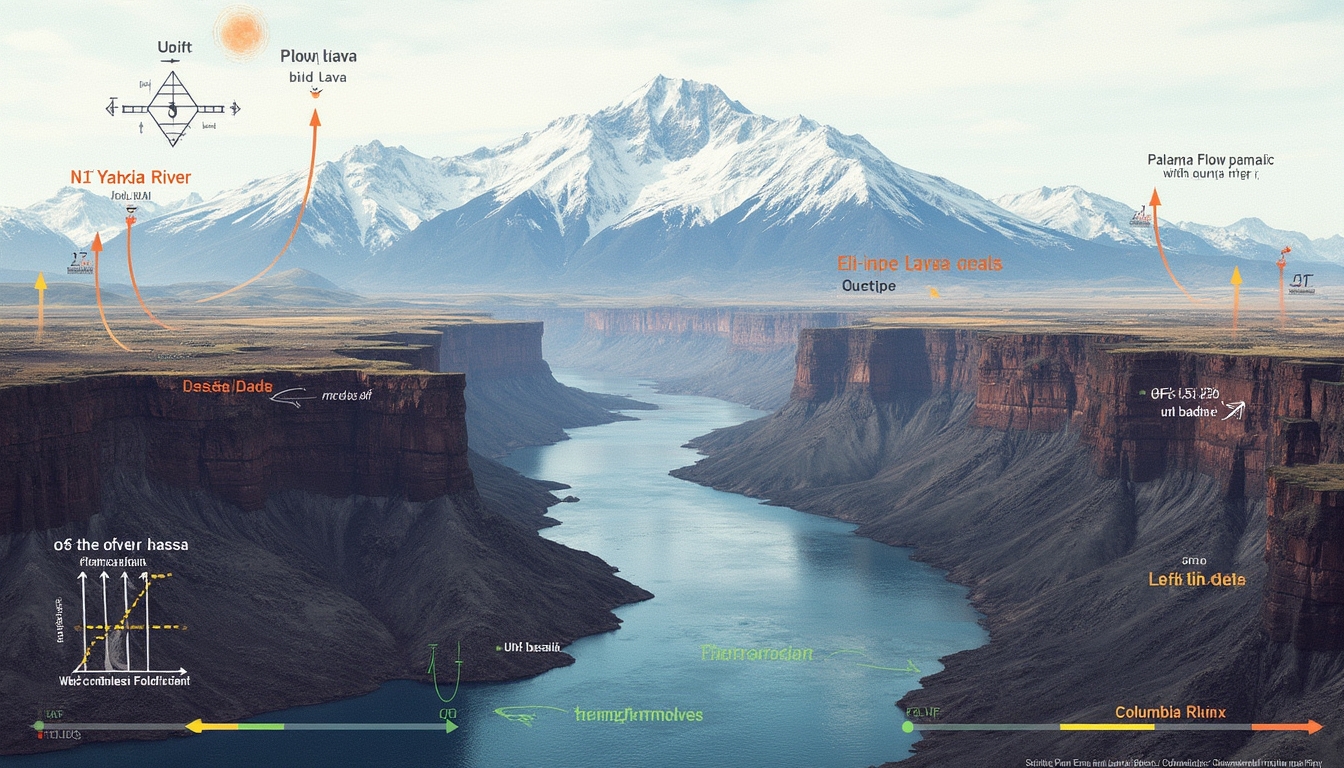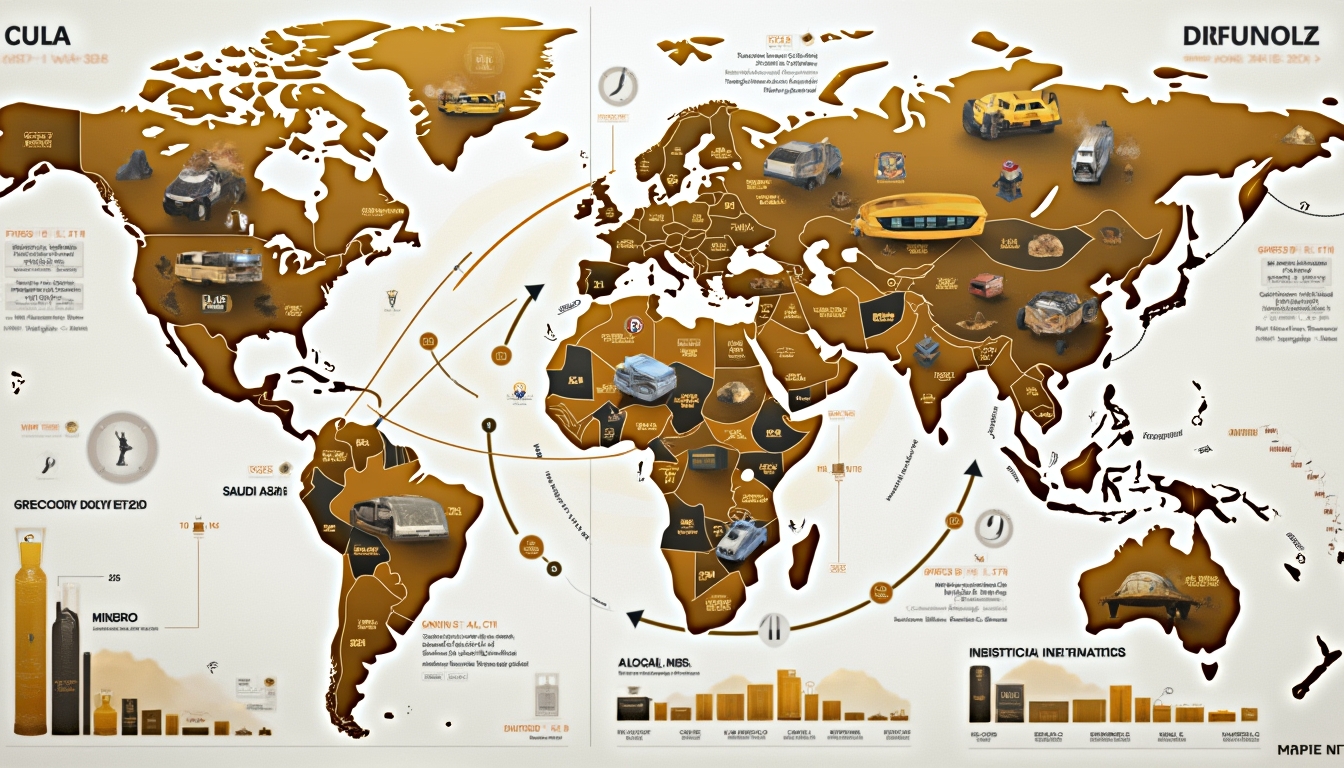The Emerging Shift in Global Gold Leadership: Insights from the Future Minerals Forum
The global gold landscape is undergoing a significant transformation, and nowhere is this more evident than at the Future Minerals Forum held in Riyadh, Saudi Arabia. This event marks a pivotal moment, signalling a shift in mineral market leadership towards the Middle East. With an unprecedented gathering of 27,000 participants, including the largest-ever assembly of mining ministers, the forum underscores the growing economic influence of Middle Eastern nations in the global gold trade.
Renowned gold market analyst Ronald-Peter Stoeferle described the conference atmosphere as "extremely positive," highlighting the enthusiasm and optimism permeating the event. This optimism reflects a burgeoning centre of influence emerging outside traditional Western markets. Notably, the demographic composition of attendees showcases a remarkable transformation. Younger professionals and women are increasingly taking on significant roles in the mining sector, a stark contrast to historically male-dominated Western mining conferences.
Saudi Arabia's strategic positioning in the gold market is becoming more evident. The kingdom boasts impressive gold reserves, ranking 15th globally with over 320 tonnes. Furthermore, Dubai's remarkable achievement in capturing 25% of the global gold trade positions it as the second-largest gold market worldwide. This development not only validates the eastward shift of gold-market power but also signifies the Middle East's growing prominence in shaping the future of the global mineral industry.
The Impact of Middle Eastern Economic Policies
The Middle East's investment in mining infrastructure and regulatory reforms has been instrumental in attracting global interest. Saudi Arabia, for instance, is implementing initiatives to unlock its mineral wealth, estimated to be worth over US$1.3 trillion. These efforts are expected to create new mining investment opportunities and drive economic diversification in the region.
By fostering a conducive environment for mining investments, countries like Saudi Arabia are positioning themselves as key players in the future of mineral exploration and production. The region's strategic focus on the minerals sector is transforming the industry landscape and attracting significant foreign investment.
Gold's Resilience Amidst Fluctuating US Dollar and Interest Rates
The gold market is demonstrating unprecedented resilience in the face of challenging macroeconomic conditions. Despite ten-year Treasury yields approaching 5% and the US Dollar Index rising by 10% since October, gold prices have remained stable. Traditionally, such conditions would have adversely affected gold prices, but the current market defies conventional expectations.
Stoeferle emphasises that under the "old playbook," these conditions would represent a "horror scenario" for gold. Yet, prices remain remarkably stable, fluctuating between US$2,650 and US$2,800 per ounce. This stability is a testament to the metal's underlying robust demand and the changing dynamics of global financial markets.
Shifting Investor Sentiments
Investors are increasingly viewing gold as a hedge against economic uncertainty and currency fluctuations. The resilience of gold prices amidst rising interest rates and a strengthening US dollar indicates a shift in investor behaviour. There is growing recognition of gold's intrinsic value and its role as a safe-haven asset in turbulent economic times.
Central Bank Demand: A Key Driver in the Gold Market
Central banks have been purchasing nearly 30% of annual gold production since 2022, marking a significant trend in the global gold market. This surge in demand is driven by escalating geopolitical uncertainty and a more adversarial international economic landscape. The increasing tensions between the US and China have accelerated this gold-buying momentum.
Specifically, emerging market central banks are accumulating gold reserves as a strategic move. The "In Gold We Trust" report states that these central banks view gold not merely as a trade asset but as "money"—a fundamental component of their financial systems. This perspective reinforces long-term, strategic demand for gold.
The Dedollarisation Trend
Saudi Arabia's potential move to sell oil in currencies other than the US dollar hints at broader dedollarisation trends. This shift could have significant implications for global financial markets. Central banks are seeking to diversify their reserves away from the US dollar, and gold is becoming an attractive alternative.
The Influence of US Politics and Fiscal Policy on Gold Prices
The potential return of Donald Trump to the presidency introduces intriguing dynamics in the gold market. The United States is currently adding "one trillion of additional debt every 100 days," raising significant concerns about long-term fiscal sustainability. This rapid accumulation of debt could lead to inflationary pressures, further enhancing gold's appeal as an inflation hedge.
Speculation continues about whether the US can "grow out of the debt" at 5% GDP annually. Notably, Trump's first presidential term aligned with a positive trajectory for gold prices. During his tenure, uncertainties surrounding policies and trade wars contributed to increased demand for safe-haven assets like gold.
The question arises: how do US politics and fiscal policy influence gold prices? The interplay between political events, fiscal decisions, and market sentiment plays a crucial role in determining gold's performance.
Market Expectations and Investor Strategies
Investors are closely monitoring US political developments and fiscal policies to anticipate potential impacts on the gold market. Strategic positioning in anticipation of policy changes could provide opportunities for capitalising on gold's next growth phase.
The Advent of Digital Gold: Revolutionising Market Access
The World Gold Council is pioneering digital gold initiatives, enabling fractional ownership down to 1/100th of a gram. This innovation promises to make gold investment more accessible to a broader audience. Unlike cryptocurrencies, which are known for their volatile nature, digital gold offers stability without extreme price fluctuations.
Stoeferle's investment approaches, which combine gold and Bitcoin, indicate a gradual convergence of "hard money" philosophies. He believes that integrating traditional assets like gold with digital assets can provide a balanced investment strategy. The key focus remains on educating younger investors about gold's long-term purchasing-power protection.
Bridging the Gap Between Tradition and Innovation
Digital gold platforms could attract tech-savvy investors interested in both the stability of gold and the convenience of digital assets. This fusion of tradition and innovation may reshape investment landscapes and broaden the appeal of gold investments.
Western Investors: Missing Out on Gold's Potential?
Surprisingly, GLD (SPDR Gold Shares) flows remained flat in 2024 despite gold's upward trajectory. This suggests minimal participation from Western markets. Expert commentary indicates that "significant capital is waiting on the sidelines" in North American and European markets.
This scenario presents a contrarian signal: when major institutional investors eventually pivot towards gold, prices could experience another sharp surge. The lack of participation from Western investors might mean they are either late to the party or completely missing out on potential gains.
Factors Contributing to Western Investor Hesitancy
Several factors contribute to Western investor hesitancy, including confidence in local economies, alternative investment opportunities, and differing market perceptions. However, as global economic uncertainties persist, the appeal of gold as a safe-haven asset may become more compelling.
Underperformance of Mining Stocks Despite High Gold Prices
Despite record gold prices, generalist investors tracking major producers like Newmont and Barrick have witnessed flat-to-negative returns. This underperformance discourages new institutional capital inflows into the mining sector.
Newmont CEO Tom Palmer aims to return the company to a tier-one cost position, potentially reigniting investor interest. Improved cost controls, margins, and stronger balance sheets across gold producers might signal renewed confidence. For investors, understanding why high gold prices haven't supercharged mining stocks is crucial.
Challenges Facing Gold Producers
Gold producers face challenges such as rising operational costs, regulatory hurdles, and environmental concerns. Addressing these issues is essential for mining companies to enhance profitability and attract investment.
Silver and Other Commodities: Indicators of a Bull Market in Gold
The persistently high gold-silver ratio suggests that silver may catch up in the later stages of the gold bull cycle. Historically, silver often outperforms gold during bull markets due to its lower price point and higher volatility.
Bank of America's research indicates that commodities have been the "most disliked asset class since 2017," presenting a potential contrarian opportunity for investors seeking undervalued assets. While oil and copper show intermittent strength, broader commodity moves remain subdued.
Experts predict that a potential final "leg up" for the US dollar might soon reverse, catalysing the next wave in commodities and precious metals. Investors are considering gold's next growth phase, including diversifying into silver and other commodities.
Strategising for Gold's Next Growth Phase
Investors aiming to capitalise on gold's upward momentum should monitor several key factors. The US dollar trend is crucial; a downward turn could spark a gold price breakout. Additionally, central bank buying continues to shrink global gold supplies, creating further price pressure.
A balanced approach incorporating physical gold, mining stocks, and possibly commodities can optimise risk-return profiles in this evolving market. Diversification is essential to mitigate risks associated with market volatility.
Practical Steps for Investors
- Monitor currency trends: Keep an eye on the US Dollar Index as it inversely affects gold prices.
- Stay informed on central bank activities: Central bank purchases can influence supply and demand dynamics.
- Diversify holdings: Consider a mix of physical gold, gold ETFs, mining stocks, and related commodities.
- Assess geopolitical risks: Global events can have sudden impacts on gold markets.
Future Outlook: What Lies Ahead for Gold in 2025 and Beyond?
The "In Gold We Trust" model projects a 2025 gold price target approaching US$3,000 per ounce, supported by strong fundamental drivers. Stoeferle argues that gold is only at the "halfway mark" in its multi-year bull run.
Geopolitics, inflation, and shifting trade alliances will continue shaping gold's longer-term price direction. As emerging economies assert more influence, the traditional dynamics of the gold market are poised to evolve.
Investors are contemplating what lies ahead for gold. Continuous education, portfolio diversification, and close trend monitoring remain crucial for capitalising on gold's upward momentum.
Key Factors Influencing Future Gold Prices
- Geopolitical tensions: Ongoing conflicts and economic sanctions can drive demand for safe-haven assets.
- Inflationary pressures: Persistent inflation increases the attractiveness of gold as a store of value.
- Technological advancements: Innovations in mining and investment platforms may impact supply and accessibility.
- Market sentiment: Investor perceptions and market psychology play significant roles in price movements.
Conclusion
The global gold market is experiencing a transformative period marked by shifting leadership, resilient prices, and evolving investor strategies. The rise of the Middle East as a key player, combined with central banks' vigorous gold purchasing and the advent of digital gold, underscores the dynamic nature of the industry.
For investors, staying informed and adaptable is essential. By understanding the multifaceted factors influencing gold prices—from geopolitical events to technological innovations—they can position themselves to benefit from gold's ongoing bull market.
Are You Ready to Capitalize on the Next Gold Discovery?
Join Discovery Alert today and gain access to real-time notifications on major mineral discoveries that can elevate your investment portfolio. Whether you're a new or seasoned investor, our AI-powered alerts simplify complex data to help you make informed decisions. Experience the advantage with a 30-day free trial by visiting Discovery Alert.







